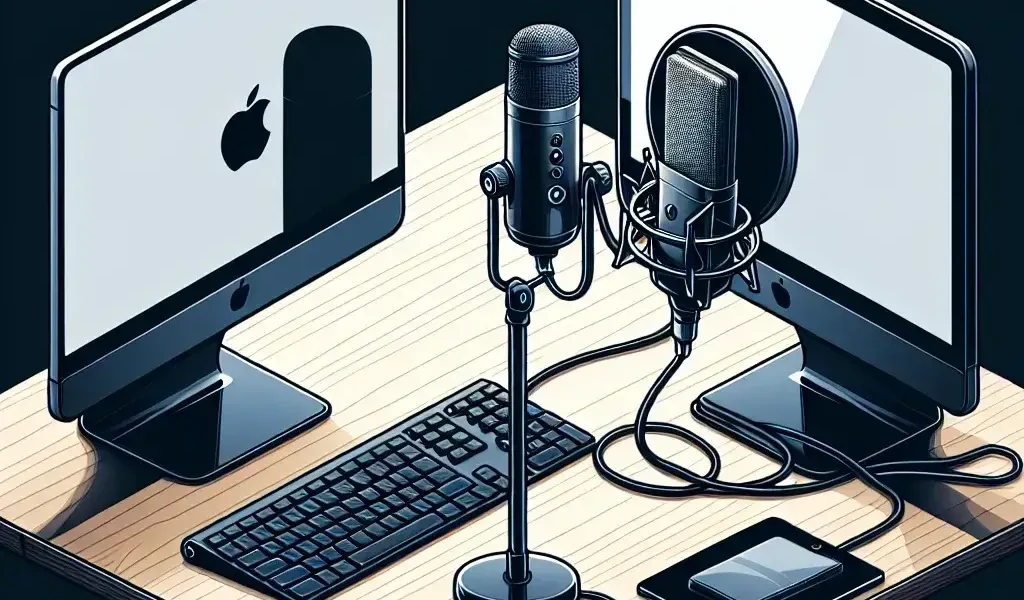How to Connect a Microphone to a Mac or Windows Computer
Introduction
Connecting a microphone to your computer can greatly enhance the quality of your audio recordings, whether for podcasts, video content, or online conferencing. Both Mac and Windows computers support external microphones, but the steps to connect them may vary slightly. In this guide, we’ll walk you through the process of connecting a microphone to both Mac and Windows systems, including the different types of microphones and troubleshooting tips.
Types of Microphones and Connections
Before diving into the connection process, it’s essential to understand the different types of microphones and connections available:
- USB Microphones: Directly connect to your computer’s USB port. They are easy to use and do not require additional hardware.
- XLR Microphones: Require an audio interface to convert the analog signal to digital. These are commonly used in professional settings.
- 3.5mm Jack Microphones: Connect via the standard headphone jack. These are typically found in consumer-grade microphones.
Connection Methods in Summary
| Microphone Type | Connection Method |
|---|---|
| USB Microphones | USB Port |
| XLR Microphones | Audio Interface |
| 3.5mm Jack Microphones | Headphone Jack |
How to Connect a Microphone to a Mac
USB Microphone
- Plug the USB microphone directly into an available USB port on your Mac.
- Open System Preferences from the Apple menu.
- Select Sound.
- Under the Input tab, select your USB microphone from the list of devices.
XLR Microphone
- Connect your XLR microphone to an audio interface using an XLR cable.
- Connect the audio interface to your Mac via USB or Thunderbolt, depending on the interface.
- Power on the audio interface (if it requires external power).
- Open System Preferences and go to Sound.
- Select your audio interface under the Input tab.
3.5mm Jack Microphone
- Plug the 3.5mm jack microphone into the headphone jack of your Mac. This may require an adapter for newer models without a dedicated headphone jack.
- Go to System Preferences and select Sound.
- Select your microphone under the Input tab.
How to Connect a Microphone to a Windows PC
USB Microphone
- Plug the USB microphone into an available USB port on your PC.
- Wait for Windows to automatically recognize and install the necessary drivers.
- Open Sound Settings by right-clicking the speaker icon in the taskbar and selecting Open Sound settings.
- Under the Input section, select your USB microphone from the dropdown menu.
XLR Microphone
- Connect your XLR microphone to an audio interface.
- Plug the audio interface into your PC’s USB or Thunderbolt port.
- Power on the audio interface.
- Right-click the speaker icon on the taskbar and choose Open Sound settings.
- Select your audio interface from the Input dropdown menu.
3.5mm Jack Microphone
- Insert the 3.5mm jack microphone into the microphone port on your PC. This port is usually pink.
- Right-click the speaker icon in the taskbar and choose Open Sound settings.
- Select your 3.5mm microphone from the Input dropdown.
Troubleshooting Tips
Sometimes, even after following the correct steps, your microphone might not work as expected. Here are some common troubleshooting tips:
- Ensure that the microphone is not muted.
- Check volume levels under the Input settings.
- Update your sound drivers if using an audio interface or USB microphone.
- Test the microphone on another device to rule out hardware issues.
- For XLR microphones, ensure that phantom power is enabled on the audio interface if required by your microphone.
- Ensure all connections are secure.
Conclusion
Connecting a microphone to your Mac or Windows computer is a straightforward process once you understand the different types of microphones and their respective connections. By following the steps outlined in this guide, you will be able to set up your microphone quickly and begin capturing high-quality audio for all your needs. Happy recording!

